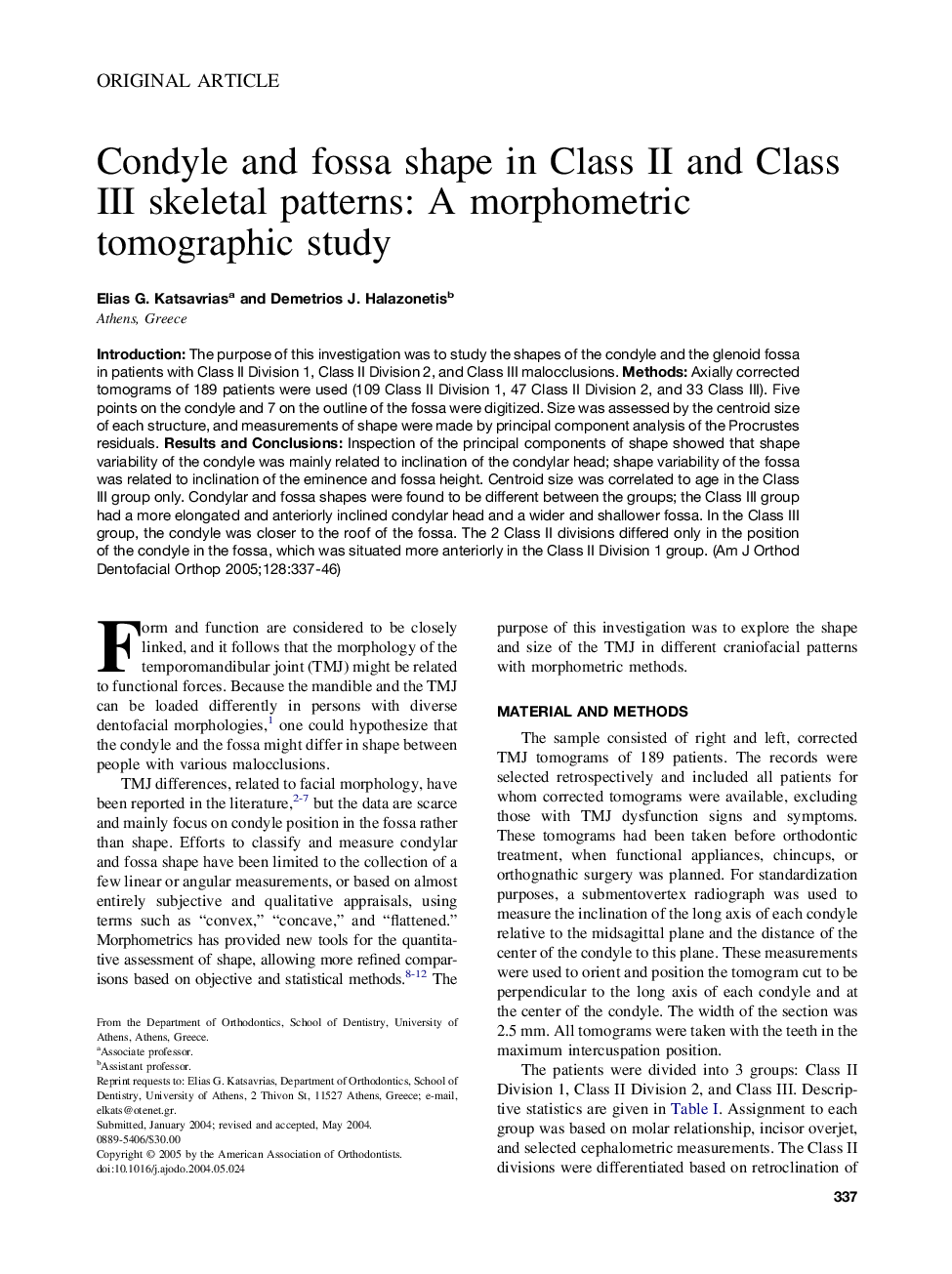| Article ID | Journal | Published Year | Pages | File Type |
|---|---|---|---|---|
| 9992670 | American Journal of Orthodontics and Dentofacial Orthopedics | 2005 | 10 Pages |
Abstract
Introduction: The purpose of this investigation was to study the shapes of the condyle and the glenoid fossa in patients with Class II Division 1, Class II Division 2, and Class III malocclusions. Methods: Axially corrected tomograms of 189 patients were used (109 Class II Division 1, 47 Class II Division 2, and 33 Class III). Five points on the condyle and 7 on the outline of the fossa were digitized. Size was assessed by the centroid size of each structure, and measurements of shape were made by principal component analysis of the Procrustes residuals. Results and Conclusions: Inspection of the principal components of shape showed that shape variability of the condyle was mainly related to inclination of the condylar head; shape variability of the fossa was related to inclination of the eminence and fossa height. Centroid size was correlated to age in the Class III group only. Condylar and fossa shapes were found to be different between the groups; the Class III group had a more elongated and anteriorly inclined condylar head and a wider and shallower fossa. In the Class III group, the condyle was closer to the roof of the fossa. The 2 Class II divisions differed only in the position of the condyle in the fossa, which was situated more anteriorly in the Class II Division 1 group.
Related Topics
Health Sciences
Medicine and Dentistry
Dentistry, Oral Surgery and Medicine
Authors
Elias G. Katsavrias, Demetrios J. Halazonetis,
